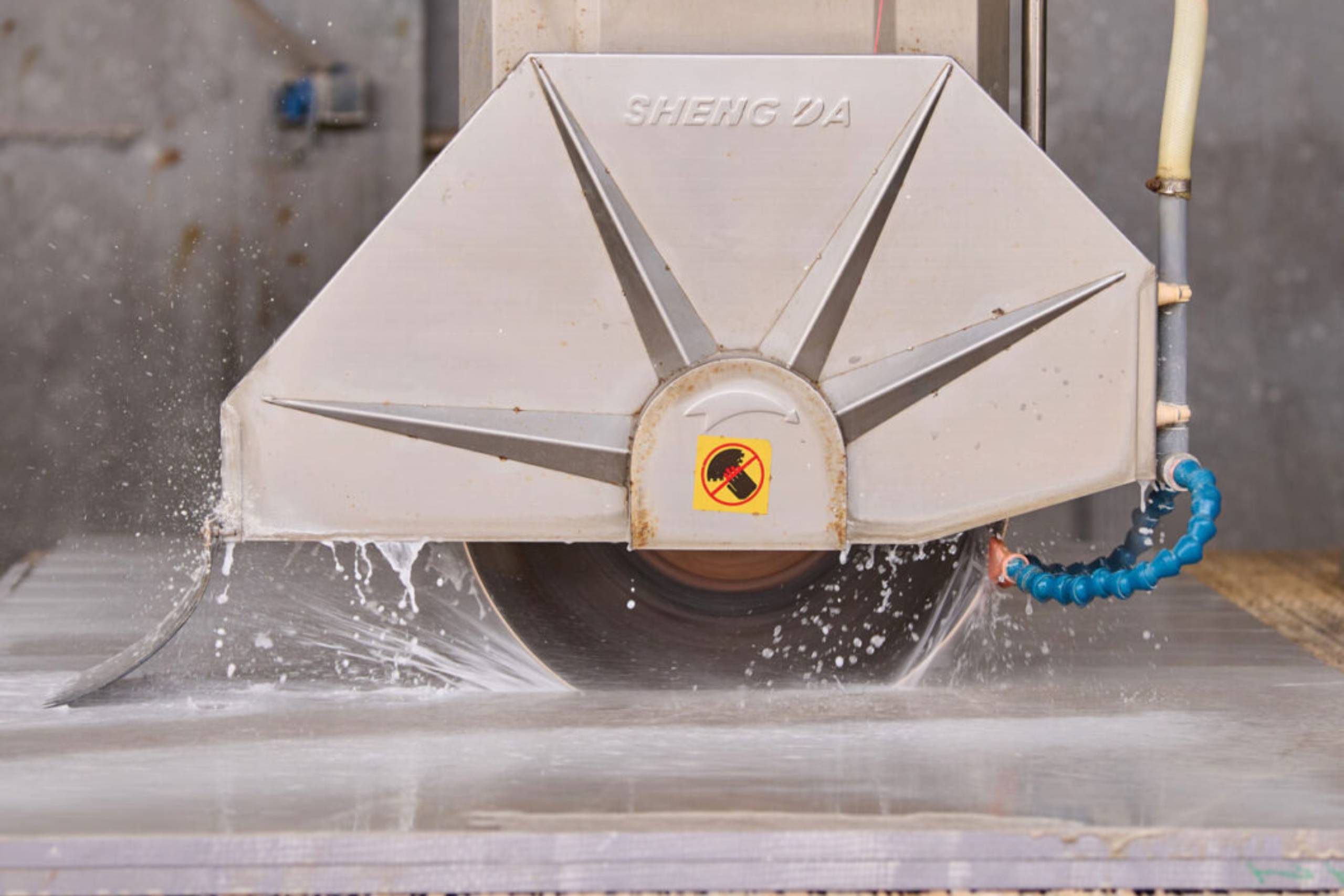Service
Cutting

Cutting
At Abu Dhabi Marble and Granite, we understand that precise cutting is crucial for achieving flawless marble installations. Our state-of-the-art facility is equipped with cutting-edge technology to ensure accurate and efficient cutting of marble slabs and blocks.
Our Marble Cutting Method:
Water Jet Cutting:
This innovative technique utilizes high-pressure water jets to cut through marble with exceptional precision and minimal waste. It allows for intricate designs, complex shapes, and even the most delicate curves.
Our Commitment to Quality:
Skilled Craftsmanship: Our experienced team of technicians possesses the expertise and skill to operate cutting equipment with precision and care.
Quality Control: We maintain rigorous quality control measures throughout the cutting process to ensure every piece meets the highest standards.
Minimizing Waste: We prioritize sustainable practices and strive to minimize waste during the cutting process.
Need Services?
Inquire Us for a Free Quote & Expert Advice.
Call +971-52-997-6659 or inquire us for personalised assistance or visit our showroom in Abu Dhabi for a comprehensive experience.
FREQUENTLY ASKED QUESTIONS
To maintain the appearance of your natural stone countertops, use coasters under glasses and place hot items on trivets or pot holders. Many foods and drinks contain acids that can etch or dull the surface of your stone. Clean your countertops with a gentle liquid dish soap and warm water. Avoid using household cleaning products, as they can damage the sealer on granite and harm the surface of marble, limestone, or travertine.
A sealer acts as a protective barrier for your countertop. Since natural stone can vary in density and absorbency, stones with more veins or swirls are typically more porous. Sealing your stone reduces the risk of stains and damage, making it easier to clean, more resistant to staining, and promoting a healthier environment. It also helps preserve the natural beauty of the stone.
To check if your countertop is sealed, place a drop of water at least ½ inch in diameter on the surface and leave it for 15 minutes, covering it with a glass to minimize evaporation. If the stone doesn’t darken, it’s likely sealed against water-based stains. For long-lasting protection and to maintain its beauty, it’s recommended to reseal your stone annually.
Marble and granite are often distinguishable by the texture of their surface. Marble features distinct veining, while granite typically has a speckled or granular look. Natural stones are classified into two main types based on their composition: Siliceous stones, made primarily of silica or quartz-like particles, are highly durable and easy to clean. Granite, slate, and sandstone fall into this category. Calcareous stones, which are mainly composed of calcium carbonate, are more sensitive to acidic cleaners and require different cleaning methods. This category includes marble, travertine, limestone, and onyx.
Granite is an igneous rock that is more commonly found than quartzite, deep within the Earth’s crust, where it forms the foundation of many continents’ sedimentary layers. Quartzite, on the other hand, contains a higher concentration of quartz compared to granite. It forms from sandstone and quartz under high heat and pressure, causing the empty spaces in the sandstone grains to fill with quartz. As a result, quartzite is harder than granite. On the Mohs scale of hardness, where 1 is the softest and 10 is the hardest, granite ranks around 6 to 6.5, while quartzite measures about 7.
In most stone installations, seams are necessary. However, during the design and layout process, you can collaborate with your fabricator to reduce the number of seams and place them in less noticeable areas.
